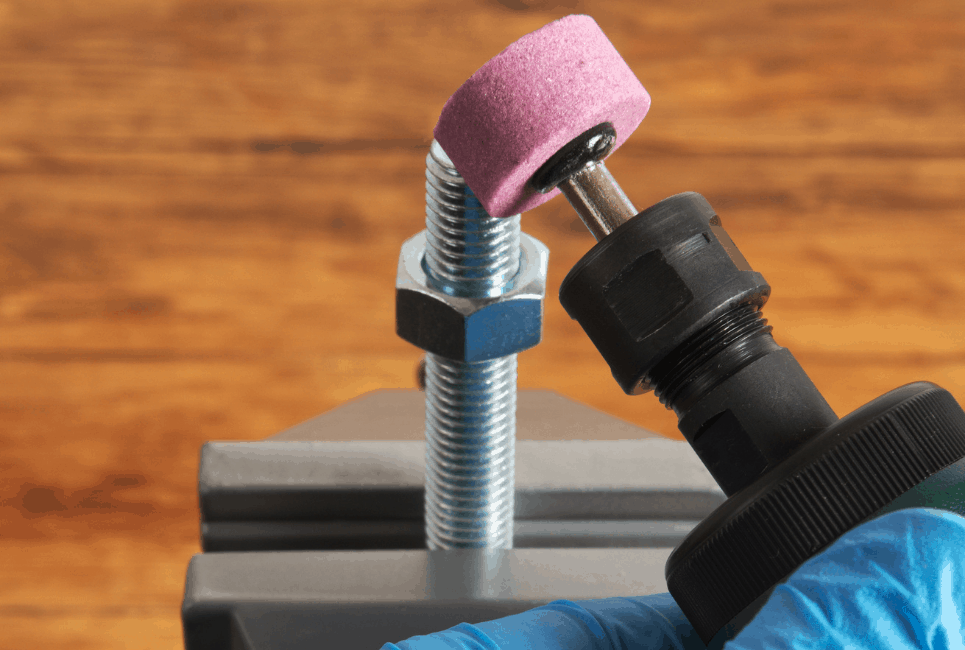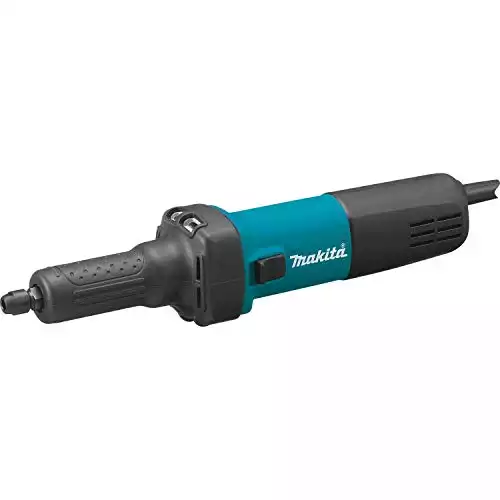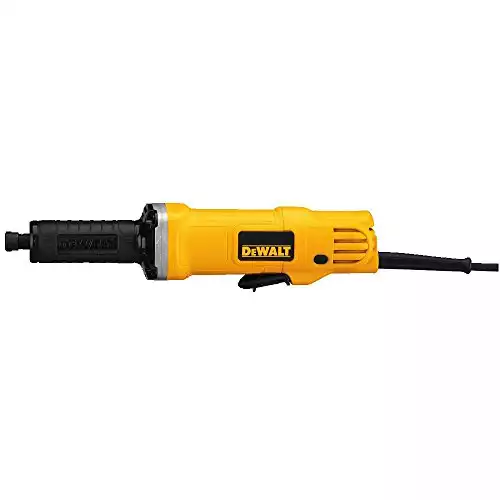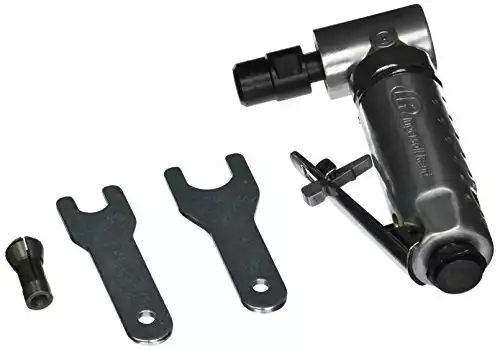- LL Flooring Review: Should You Buy From There? - June 25, 2022
- Grizzly G0771Z Review: Do We Recommend? - June 25, 2022
- Micrometer vs Caliper Compared: Which Measurement Tool Should You Buy? - June 25, 2022
How to Find the Best Die Grinder
Every workshop needs a versatile tool, like the die grinder that has enough power to process metal, stone, or other materials. Finding the best die grinder for your workshop may not be easy, especially if you don’t have a lot of experience with these power tools.
Besides the die grinder itself, you will also have to choose a bit set that is compatible with the tool, and that allows you to work with different materials. These handheld tools can operate at different speeds, so you have to choose a model that is suited for the type of materials you want to process.
In this guide, we are going to show you how to find the best die grinder by taking you through all factors you have to consider while searching for this type of tool.
What is a Die Grinder?
A die grinder is a portable, handheld tool designed with versatility in mind. They can be powered either by electricity or compressed air, and they contain a rotating spindle equipped with a collet that keeps the rotating bit in place.
Although they resemble rotary tools, die grinders are more powerful, but the speed at which they operate is usually lower. How effective a die grinder is going to be, depends on the bit you pair it with, as each bit is designed for a different task.
The primary purpose of a die grinder is to remove upper layers from metal surfaces, but you can also use this tool to make almost any surface smoother.
However, you will have to study the features of a model you are interested in carefully, as the performance capabilities can vary from model to model.
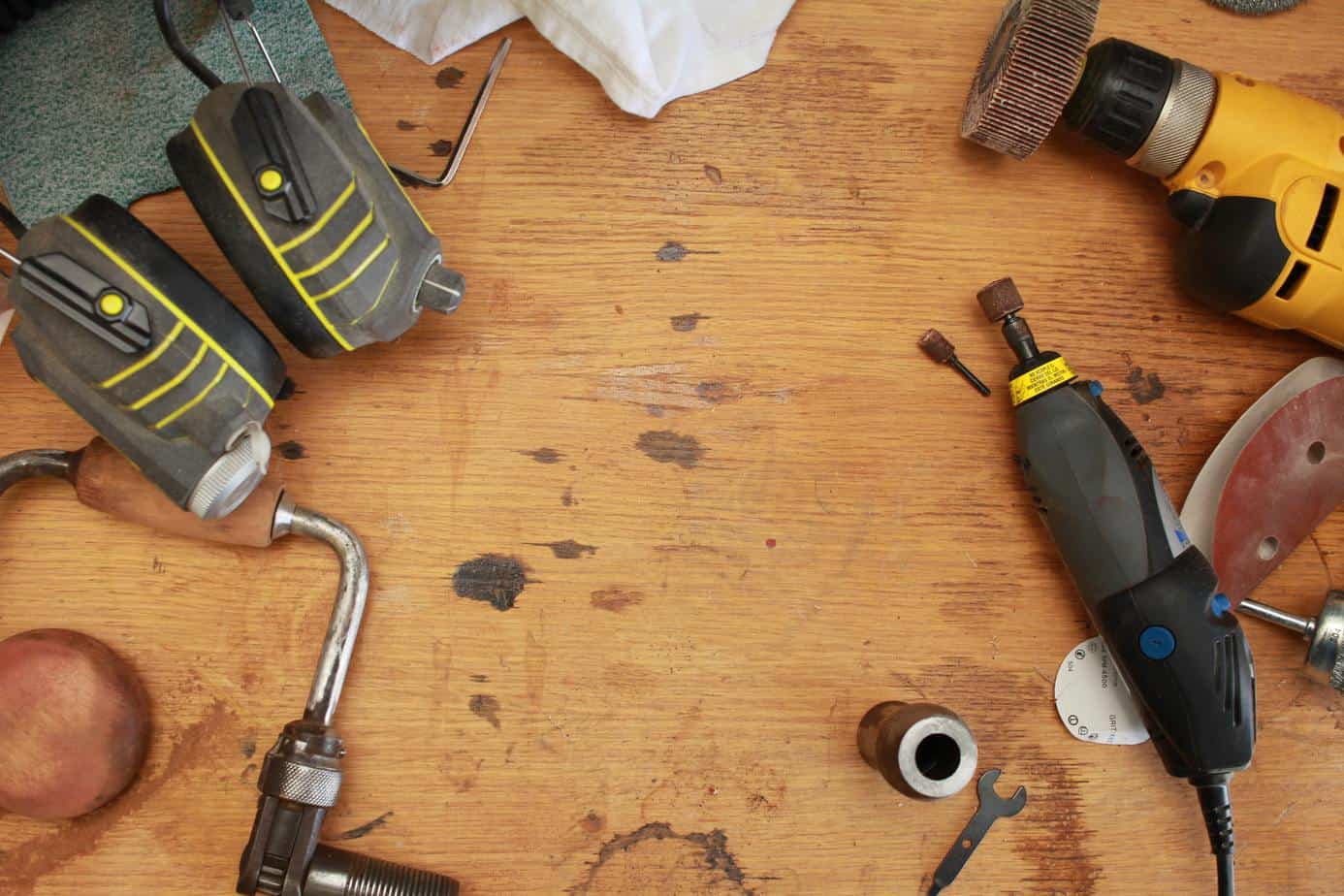
Which materials can be processed with a die grinder?
The name of this tool comes from its original purpose, which was to mold metal into a chosen shape. Over the years the range of materials that can be processed with a die grinder has extended significantly, as they are commonly used to model wood, plastic, and even stone.
Most models have a ¼-inch collector, while smaller 1/8-inch die grinders are also available, but they don’t have the same power output capabilities that larger models offer. A collet can hold a wide range of bits that include
- Wood and metal cutting wheels
- Grindstone and grinding bits
- Wire and sanding wheels
- Polishing wheels
- Carbide burrs
Each of these attachments enables you to perform a different task, which is the reason why knowing the purpose for which you will be using a die grinder can help you choose the complementary equipment.
The most common applications of Die Grinders
Even though there are numerous contexts in which die grinders can be useful, their range of applications is somewhat limited by the availability of bits. Those that can be found on the market are commonly used to either cut or polish metal and other materials.
Similar to angle grinders, most workshop owners utilize die grinders to shape a material and polish it to perfection. Let’s take a look at some of the most common applications of die grinders.
Die grinding
Grinding the dies was for a long time the only purpose for which you could use these tools. Die grinders enable you to match profiles of different tool parts manually, such as plastic molds, forging dies, metal stamping dies, or die-casting dies.
Also, a die grinder can be utilized during the chamfering and deburring processes, as well as to even two welded surfaces.
Metal polishing
Polishing metal manually can be tiresome, especially if you would like to polish a large surface. Pairing a die grinder with a rotary polishing bit will enable you to polish stainless steel or any other type of metal.
This makes die grinders very useful if you want to polish a car, an object that contains holes or has a curved exterior. It is also worth noting that polishing a flat surface with a die grinder can be a challenging task.
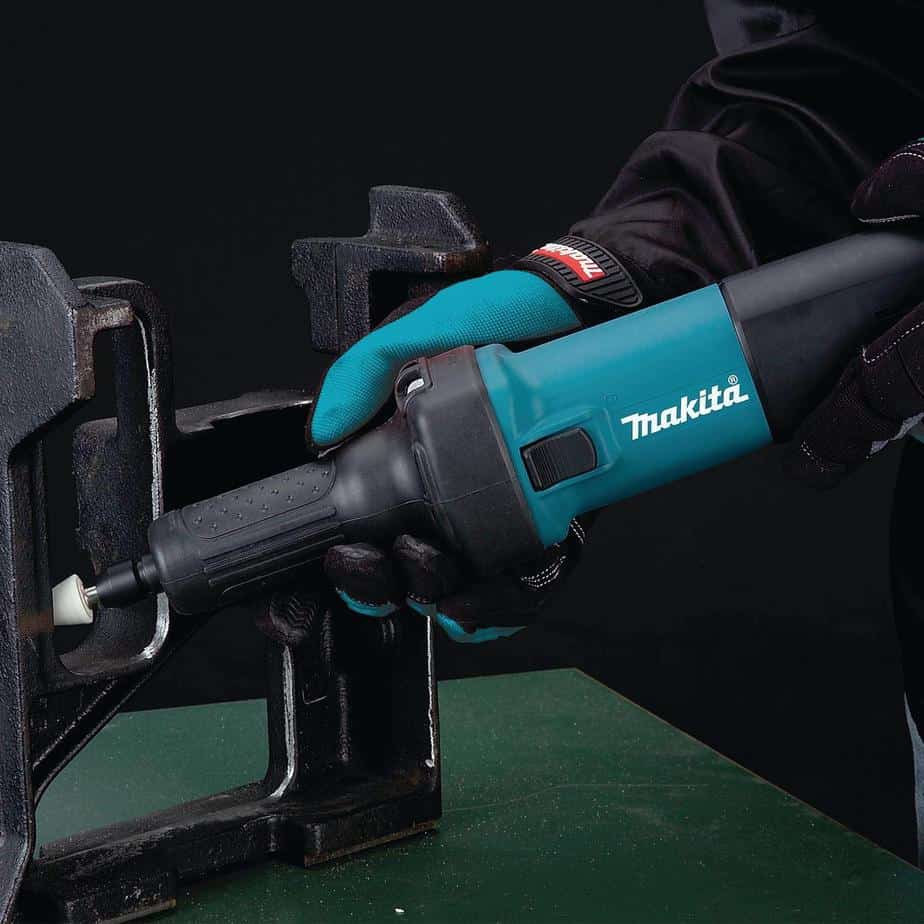
Creation of smooth surfaces
Die grinders can make the finishing stages of creating a wooden item much easier, by enabling you to pair it with a bit that can smoothen an object made from lumber. Also, die grinders are frequently used to flatten out a weld spot.
They provide you with more precision than angle grinders and similar tools as they are not as difficult to handle.
Getting rid of rust
Rust is a sure sign that a metal object is decaying and that sooner or later is going to break down. Removing it from a surface is often a painstakingly slow process, and for that reason, metalworkers prefer to perform this task with a die grinder.
Besides being highly efficient in getting rid of rust, die grinders make this process relatively quick.
Blade sharpening
Whether or not you will be able to perform this task, depends on the die grinder model you have. Most die grinders feature a blade sharpening attachment that enables you to sharpen knives, axes, and other tools that must have a sharp edge.
The grindstone bit is frequently featured in standard bit sets for die grinders, but they can also be purchased separately.
The advantages of die grinders
Versatility – A die grinder can be used to perform different tasks during thehome improvement process. These tools are compatible with bits that can sand, grind, cut, or polish different types of materials, which enables you to utilize them while redecorating your kitchen or fixing your roof.
Ease of use – Operating an angled or straight die grinder is easy, and you don’t have to be an experienced handyman to remove rust from a metal surface or sand a wooden board.
Corded electric die grinders can be plugged into any power outlet, and they may be the easiest to use.
Affordability – These tools are not expensive, as you can get them at a reasonable price along with the bit set. Even so, opting for a no-name brand is usually not a good idea, because the tool may lack safety options or weak construction.
Disadvantages of die grinders
Some models operate at a constant speed – Adjusting the speed at which the tool operates to the material you are working with, may not always be possible. Die grinders that don’t offer speed adjustment features can only be used with robust materials that cannot get damaged by them.
Factors worth considering while choosing a die grinder
In addition to your budget and the purpose for which you are going to use a die grinder, there are a number of aspects you should take into consideration that can make it easier for you to decide which die grinder model is the best option for you.
Let’s take a closer look at the factors that can help you choose the best die grinder for your workshop.
The source of power and the power rating
Die grinders are divided into two categories, those that are powered by electricity and those that run on air. However, if you opt for a pneumatic die grinder you will not be able to use it without an air compressor.
On the other hand, an electric die grinder can either be with or without a power cord, which, to a certain degree, determines contexts in which you can use them. A cordless die grinder runs on batteries that often have to be recharged while the tool is in use, as heavy-duty tasks tend to drain them quickly.
Corded electric die grinders are the most reliable and most powerful type of die grinder on the market, as they just need a steady supply of electricity in order to run normally. Their performance is also impacted by the power rating.
Most models have an 18V or 20V power rating, and opting for a model that has a higher rating is a good decision if you want to use the tool to process robust materials.
Speed adjustments
Changing the speed at which the bit rotates enables you to adjust a die grinder to the demands of the task you’re performing. Most models have a maximum speed of 20.000 rpm that is suited for shaping or polishing metal.
However, operating the tool at this speed can ruin a softer material like wood or plastic. For that reason, it is paramount to check if the die grinder you would like to get offers the option to alter the speed at which the bit rotates.
It is also worth noting that die grinders capable of producing more than 50.000 rpm can only be used to process heavy-gauge metals or other sturdy materials.
User-friendliness
Several features can have an impact on how easy it is to use a die grinder. The tool’s weight is arguably the most important of these features, as holding a heavy die grinder for hours can be tiring and it may make accomplishing the task you want to perform slower.
The position of the exhaust vents can also increase the tool’s efficiency, since models that have vents that are facing the user’s body discharge the debris in the direction of the user.
That’s why opting for a die grinder that has exhaust vents at the front is a much better choice, although you need to pay attention to where the debris is discharged in order to avoid making a mess. Some die grinders produce a lot of vibrations, which can make it difficult to maintain control over them.
The efficiency of the tool is not going to be affected by vibrations, but it may be challenging to utilize this tool for hours if it is constantly producing strong vibrations.
CFM Capacity
A pneumatic die grinder cannot be used without an air compressor, but two devices need to have matching pressure levels. For that reason, you need to make sure that the air compressor and die grinder have matching CFM and PSI levels.
The pneumatic die grinder’s motor may stall if you pair it with an air compressor that is not powerful enough to supply CFM and PSI levels the tool needs to function normally.
Most models require between 3 and 7 CFM to produce approximately 20.000 RPM, but CFM capacity varies from model to model and you must check this feature to know which compressor you need.
The 8 Best Die Grinders
Even if you know exactly which features a die grinder you want should have it can still be difficult to find a model that matches your expectations.
That’s why we selected some of the best die grinders with the aim of helping you narrow down your choices and finding a model that is both versatile and powerful.
| The Best Die Grinder | Makita GD0601 | Check the latest price here |
| The Best Electric Cordless Grinder | Milwaukee 2748-20 | Check the latest price here |
| The Best Corded Electric Grinder | DeWalt DWE4887 | Check the latest price here |
| The Best Pneumatic Grinder | Ingersoll Rand 301B | Check the latest price here |
Makita GD0601 – The Best Die Grinder
The AC and DC capability extends the range of sources from which you can power the Makita GD0601. This corded die grinder can be connected to a generator and utilized at worksites that don’t have access to the utility grid or plugged into any power outlet in your household.
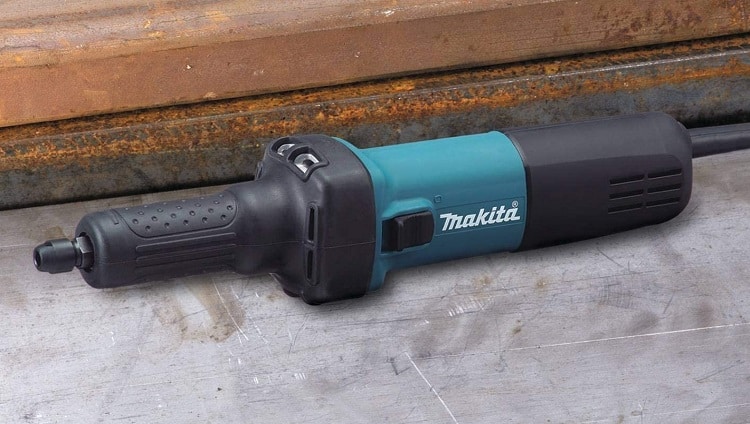
The tool is equipped with a 3.5 Amp motor that can produce up to 25.000 rpm and it features both front and rear vents that keep the motor cool during extended use.
The Makita GD0601 has a labyrinth construction that prevents the debris from reaching the motor or the bearings which in turn prolongs their life span. This ¼-inch die grinder features a protective zig-zag varnish that seals the armature and eliminates the chances of damages occurring during rotation.
The collet is compatible with bits that have diameters within the ½-inch to 1-inch range so that you can perform different types of tasks. You should keep in mind that this tool isn’t designed for soft materials as it is too powerful for sanding wood or softer materials.
Pros
- Directs the debris away from the user
- The tool can be powered by AC and DC power sources
- Compatible with a broad range of bits
- Excellent vibration reduction features
Cons
- Adjusting the tool’s speed isn’t possible
- Short warranty period
Milwaukee 2748-20 – The Best Cordless Electric Die Grinder
There are only a handful of brands on the market that offer die grinders that have similar performance capabilities to those provided by the Milwaukee 2748-20. Although this tool is produced in China, each of its components is skillfully crafted and designed for durability.
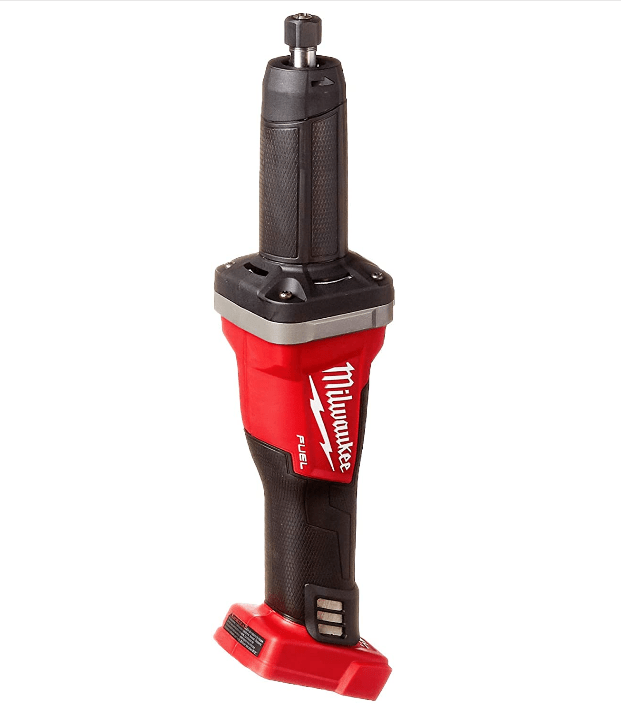
This cordless die grinder by Milwaukee is powered by an M18 REDLITHIUM XC 5.0 battery that allows you to use the tool at approximately 20.000 rpm for approximately 20 minutes. The 18V battery system somewhat limits your option in terms of continuous usage of the tool.
However, the ¼-inch collet is compatible with a variety of bits that can be used for polishing, cutting, sanding, or sharpening purposes. Milwaukee’s model weighs just four pounds and produces a minimum amount of vibrations, so you won’t experience any fatigue or discomfort while using it.
This brushless model doesn’t make a lot of noise and it won’t disturb your neighbors or members of your family.
Pros
- Compact and lightweight
- Capable of delivering a speed of 20.000 rpm
- The manufacturer offers a 5-year warranty
- Noiseless operation and low vibration level
Cons
- Batteries must be purchased separately from this already pricy die grinder
- Milwaukee 2748-20 can only operate at 20.000 rpm
Read our full Milwaukee vs Makita Power Tool Comparison.
DeWalt DWE4887 – The Best Corded Electric Die grinder
AC and DC capability is just one of numerous reasons why DeWalt DWE4887 is frequently mentioned in conversations about the best die grinders on the market. This 1-1/2-inch corded grinder has a 4.2 amp motor that produces 25.000 rpm.
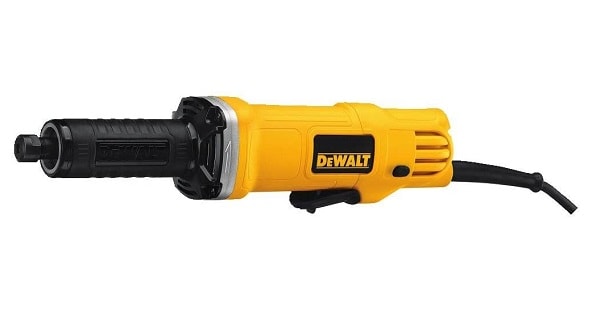
Despite having the capability of developing such a high speed this die grinder makes a minimal amount of vibrations. This makes it suitable for applications that take hours to complete like grinding large metal surfaces or polishing stone.
The tool is compatible with all ¼-inch bit sets, but a 1/8-inch reducing sleeve that extends the tool’s compatibility to smaller bits is also available. DeWalt DWE4487 has a paddle switch that ensures you can maintain control over it even when you working with demanding materials.
A Lock-On button prevents you from starting this die grinder accidentally, and it improves your safety while dealing with delicate workpieces. The exhaust vents are positioned at the front of the tool so that the debris cannot reach the user.
Pros
- Powerful 4.2 amp motor
- Excellent safety features
- Performs grinding tasks at a professional level
- Doesn’t heat up quickly
Cons
- Can’t be used with soft materials
- Rotation speed cannot be adjusted
Ingersoll Rand 301B – The Best Pneumatic Die Grinder
If you are looking for an inexpensive pneumatic die grinder capable of great performances, then Ingersoll Rand 301B may be one of the best options at your disposal. The tool’s ball bearing construction dampens vibrations and prevents them from damaging any of its components.
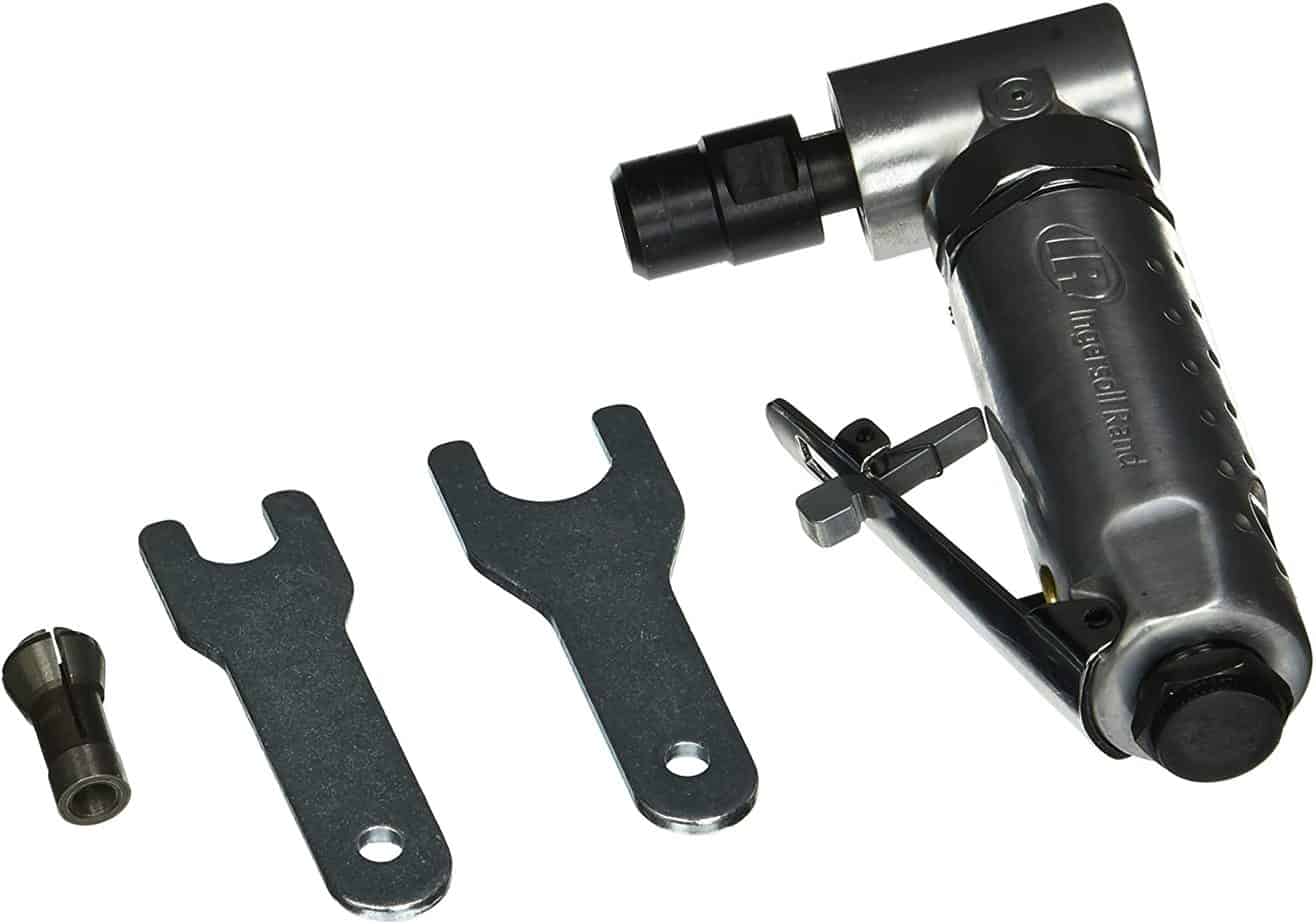
This model features a 0.25 HP motor that develops the free speed of 21.000 rpm within seconds, and it has an average air consumption of 6 CFM without load.
However, the tool’s air consumption can increase to 24 CFM under load, which means that you are going to need a relatively powerful air compressor to use the Ingersoll Rand 301B. The air inlet on this pneumatic die grinder has a ¼-inch diameter, and the size of the hose cannot be smaller than 3/8-inch.
The exhaust vents are located at the front of the tool, which prevents the debris from injuring the user while keeping the work surface clean.
Pros
- This pneumatic die grinder weighs just 1.02 pounds
- Compatible with most ¼-inch bits
- The ball-bearing construction dampens vibrations
- Capable of withstanding heavy-duty usage
Cons
- The tool makes a lot of noise
- High maintenance requirements
AirCat 6255
A tool like AirCat 6255 enables you to perform tasks like cutting, sanding, or polishing at a professional level, from the comfort of your home. This die grinder is remarkably lightweight and compact, and you won’t have much trouble using it or reaching remote parts of the workpiece.
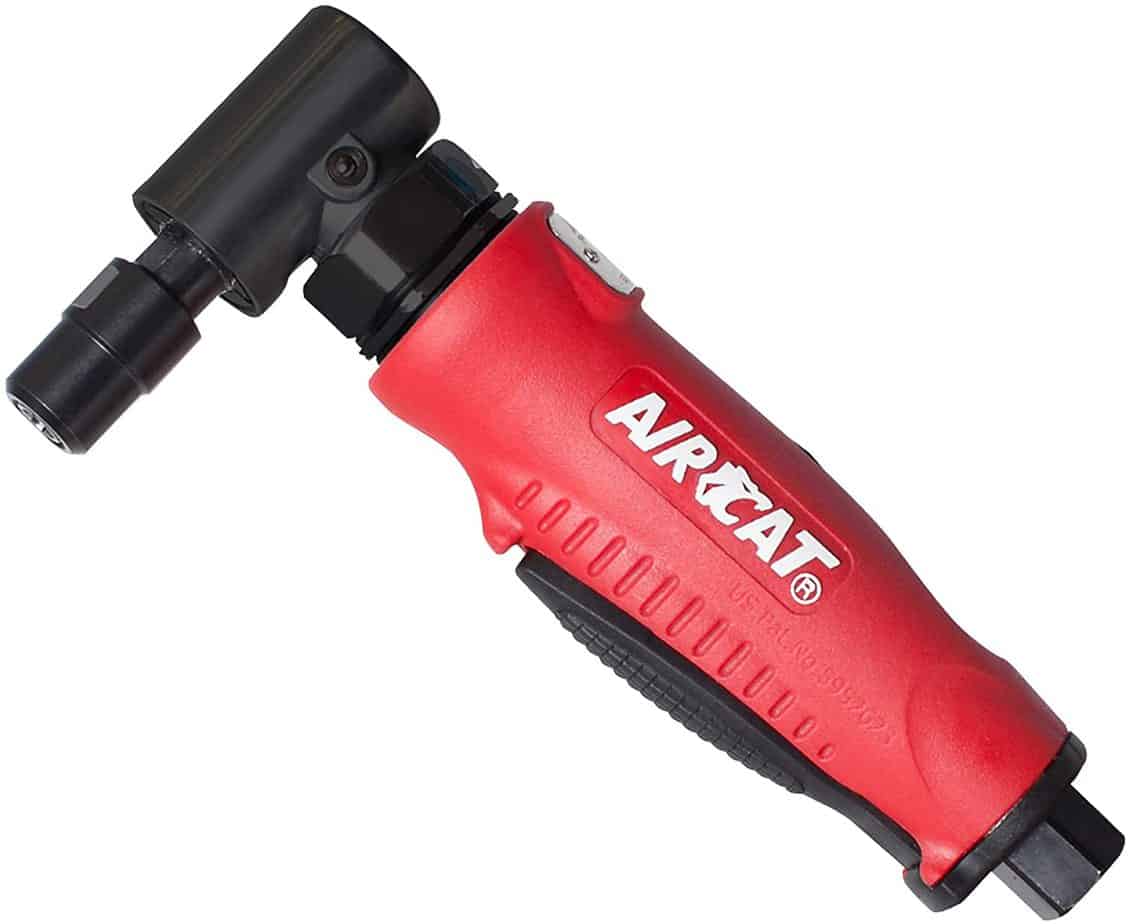
What’s more, the casing is designed to keep vibration levels low, and you can continue using the tool for hours without experiencing discomfort. The AirCat 6255 is quieter than similar models as it makes between 82 and 86 dB at a maximum power output.
Controlling the die grounder’s speed is relatively easy since you can simply increase or decrease the amount of air that is reaching the device. The exhaust system is located at the back of the tool, which is the reason why a certain amount of debris and dust can reach its operator.
The AirCat 6255 needs just 6CFM to reach the rotation speed of 20.000 fpm but without load only, and it utilizes a ¼-inch NPT/BSP air inlet.
Pros
- Low noise and vibration levels
- Effortless speed control
- Powerful ½ HP motor
- Weighs just 1.1 lbs
Cons
- Not suitable for all materials
- It takes time to get used to this tool
Chicago Pneumatic CP875
You can choose between a right angle and straight versions of the Chicago Pneumatic CP875 die grinder that are designed for slightly different purposes. The right-angle model of the tool is highly efficient when used to grind or polish spaces that are not easy to reach.
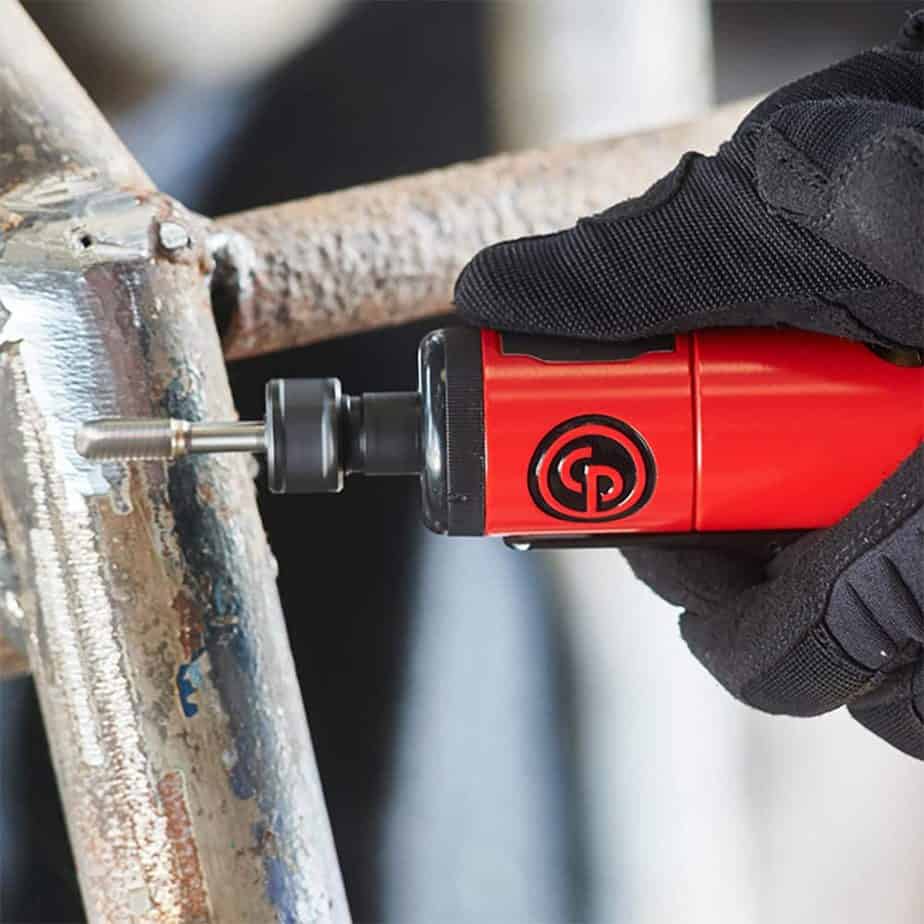
On the other hand, the straight version of Chicago Pneumatic CP875 enables you to mold, polish, or grind different materials. In addition, the maximum speed these two models can develop is not the same, as the right angle die grinder cannot develop speeds larger than 22.500 rpm.
The straight pneumatic CP875 has the capacity to process materials at 27.000 rpm. However, both models allow you to adjust the speed to the material you are working with and they consume between 11 and 22 CFM depending on the load.
Safety features Chicago Pneumatic CP875 models offer are remarkable, as lock-off throttle ensures the tool cannot be started by accident.
Pros
- Available in the right angle and straight versions
- Compatible with all ¼-inch bits
- The tool has a built-in regulator
- Affordable
Cons
- Questionable durability
- Speed can only be controlled through the air compressor
Astro 219 Onyx
Sculptors working with wood, metal, or glass are going to love using the Astro 219 Onyx die grinder. This tool is designed for carving, engraving, or cutting purposes and it comes with an 8-piece set that can be used with plastic and other materials.
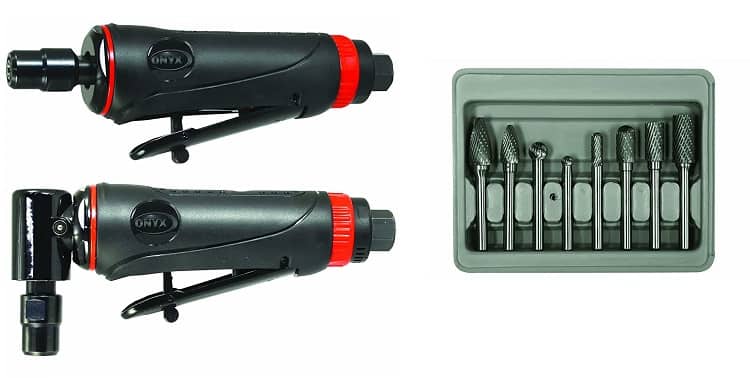
The Astro 219 Onyx is capable of executing detailed jobs to perfection, as it weighs a bit more than 1 lbs, and it enables you to easily reach all parts of the piece you are processing. The tool is equipped with a 1/3 HP motor that enables it to operate at the speed of 25.000 rpm.
The pneumatic die grinder consumes approximately 3CFM, while the air pressure can vary from 90 psi to 120 psi. A ¼-inch collet keeps the bits firmly in place and the rib-textured handle allows you have complete control over the tool so that you can perform any task with a great level of precision.
Pros
- The tool works even with mini air compressors
- Equipped with a built-in regulator
- Low vibration levels
- Ships with an 8-piece bit set
Cons
- Made from plastic materials that cannot withstand heavy usage
- The exhaust system directs debris towards the operator
Ingersoll Rand 5102Max
The abundance of features that comes with the Ingersoll Rand 5102 Max can impress even the most demanding professionals. Although, this pneumatic die grinder was designed for DIY and home-based projects you can still use it to model or cut high-gauge materials.
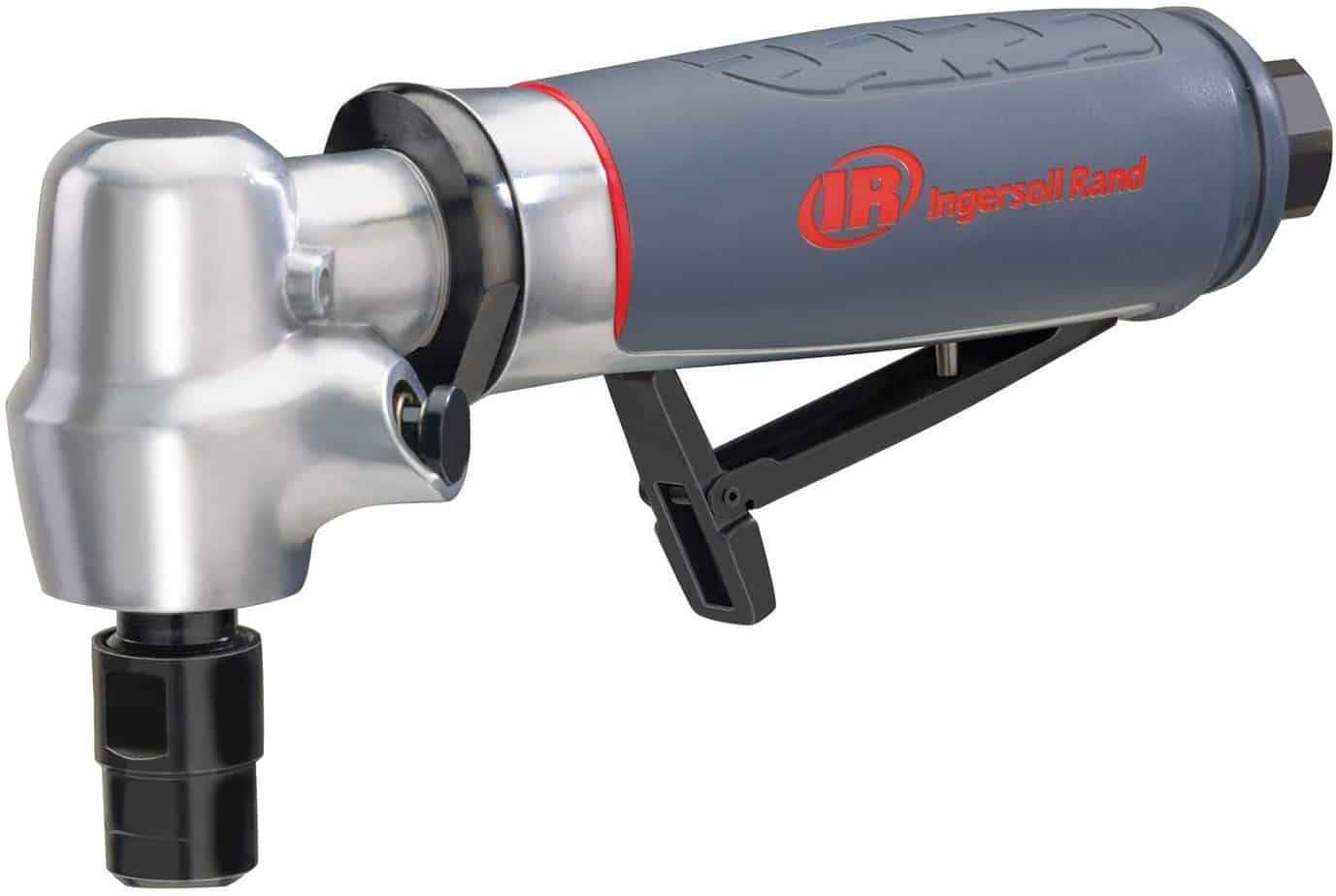
The 0.4 HP motor produces a free speed of 20.000 rpm, but it makes a lot of noise in the process. This die grinder needs around 25 CFM to operate at the maximum capacity, and it features a standard ¼-inch NPTF air inlet.
The Ingersoll Rand 512Max doesn’t require frequent lubrication which reduces the upkeep requirements and decreases the chances of oil reaching the surface of the piece you are working on.
What’s more, the tool has a built-in lubricating wick that keeps the angle gear in great condition over long periods of time. The spindle lock makes it easy to switch between different bits and the safety trigger ensures that the tool cannot be started accidentally.
Pros
- The lube-free design keeps the work surface clean
- The tool’s vibration levels are low
- The motor ensures that the die grinder can operate at high speeds
- Made from sturdy materials
Cons
- Heavier and larger than similar models
- Relatively high air consumption under load
DeWalt DWMT70783
Despite having a motor that is capable of developing 25.000 rpm, the DeWalt DWM70783 is far from being an ideal die grander. The tool is compatible with ¼-inch and 1/8-inch bits and you can use it for a broad spectrum of woodworking and metalworking tasks.
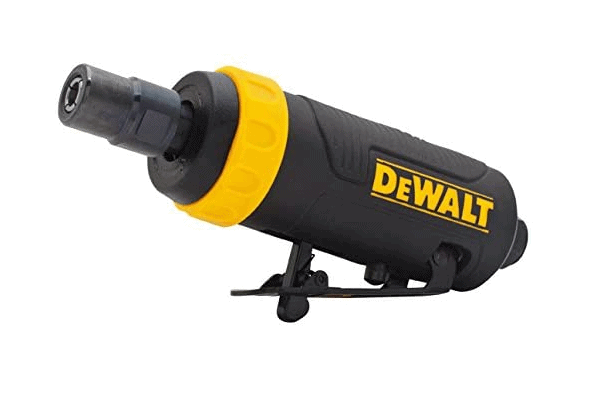
Features like Touch Control trigger and Safety Throttle Lever improve your safety while the tool is operational. This die grinder consumes 3CFM of air while it is not under load, but air consumption increases drastically once the load is added.
Even though this DeWalt’s model has a cushion grip, its body is composed of a mixture of aluminum and plastic parts. The lack of vibration dampening properties makes it difficult to handle this tool over a period of a few hours.
Nonetheless, the DWMT70783 weighs less than a pound, so it is highly unlikely that you will experience fatigue while you’re using it.
Pros
- Affordable pneumatic die grinder
- Compatible with a broad range of bits
- Low average air consumption
- The die grinder’s length is just 7 inches
Cons
- Construction of the tool impacts its durability
- The exhaust system is inefficient
Red – Omni High Speed Die Grinder 92820
Even though it is not produced by one of the industry-leading brands, the Omni High Speed 92820 Die Grinder is still a good choice for hobbyists and workshop owners in need of an electric die grinder that can operate at high speeds.
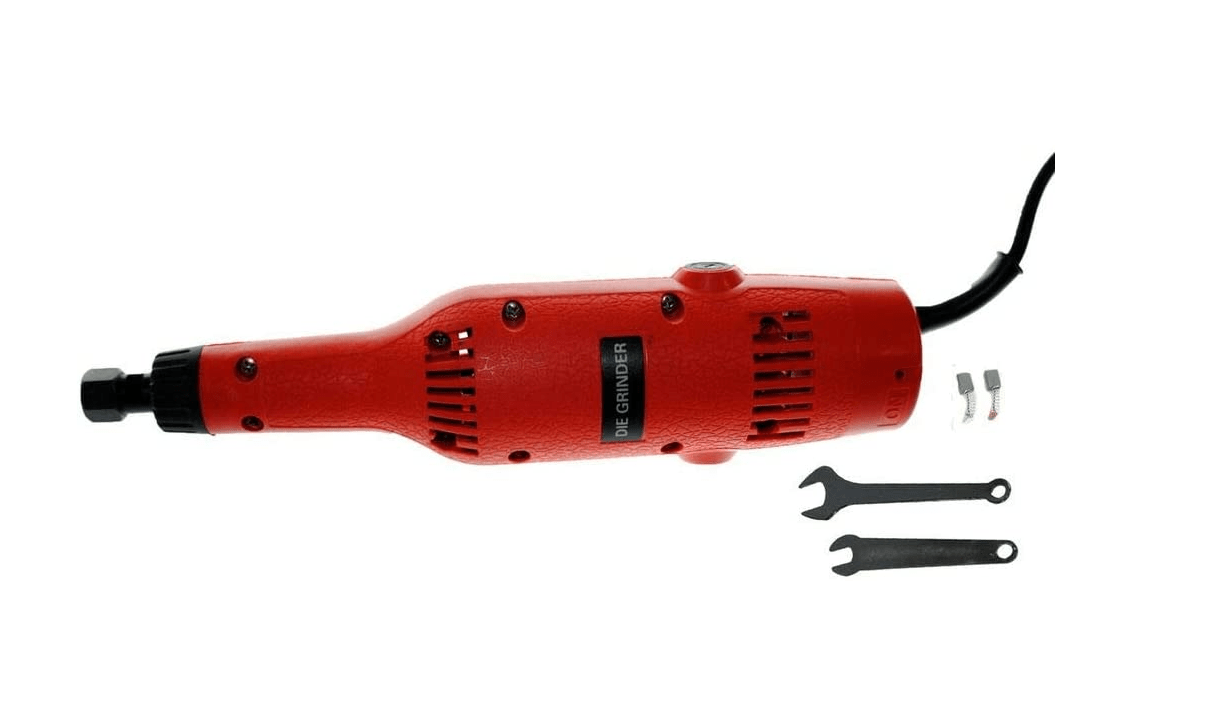
This tool can only work at 25.000 rpm, and you cannot decrease its speed. That’s why this die grinder isn’t a good choice if you would like to work with lumber or plastic. However, you can use this tool to remove rust or cut through different types of metals.
The Omni High Speed 92820 runs on 120V current and you cannot use it on 220V utility grids or power it through a DC power source like a generator. Despite having a ¼-inch collet this tool is only compatible with a handful of bit sets, so finding the bits for this model can be difficult.
Pros
- Simple setup process
- A high-speed tool capable of molding or polishing metals
- Less expensive than most die grinders
- Durable construction
Cons
- No DC compatibility
- Lacks safety features
Frequently asked questions about die grinders
Answer: Die grinders are affordable and versatile tools that are not going to burn a hole in your budget. You won’t have to spend more than $100 to get a good die grinder.
Die grinders are usually smaller and lighter than similar power tools, but still powerful enough to cut through steel or remove old rust from a surface.
Corded electric die grinders are usually more powerful than pneumatic die grinders, but most models operate at constant speeds. The speed of a pneumatic die grinder depends on the amount of air that reaches the tool.
Hence, you can adjust the tool’s speed by altering the PSI and CFM values on the air compressor you are using to power the pneumatic die grinder.
The majority of die grinder models come with a one-year warranty, while only several manufacturers offer a five-year warranty. The frequency at which you are using a die grinder affects its durability, but in most cases, these tools can be used for several years.
Our Verdict: Which Die Grinder Has The Most to Offer?
Even though they are versatile tools, die grinders have their limitations, as they are not a universal tool that can process any material.
The speed at which a die grinder operates determines which materials it can work with. Consequently, a model like DeWalt DWE4887 is a poor choice if you want to use it to polish wooden pieces since it’s too powerful for such a task.
On the other hand, a pneumatic die grinder such as Ingersoll Rand 301B or AirCat 6255 are powerful enough to grind and polish metals, but at the same time, they allow you to adjust their speed to the material you are working with.
Either of these die grinders can be highly efficient when used in the right context, so knowing which types of materials you want to process will assist you in narrowing down your choices.
Hopefully, our guide has helped you learn how to find the best die grinder. Leave a comment and share your opinion with us or read our Dremel 4000 Review to learn more about this rotary tool.

